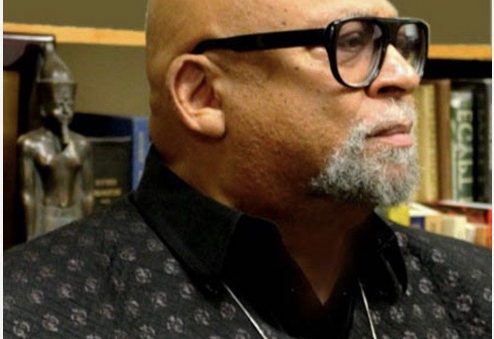The lynching of the Lord?
The cover title of the April 13, 2009, issue of Newsweek reads: “The Decline and Fall of Christian America.†One reason for this is that “Christians†have dishonored themselves by double-crossing Christ. With Easter just a few days away, millions of professed Christians will do the Son of God a disservice when they flock to church in their Sunday best to be reminded that Christ died on a cross for all our sins. The question is: But did he really? America calls itself a “Christian†nation. The Constitution is said to have been fashion after the tradition of Jewish Scriptures in tandem with the Christian New Testament. “Christians†say Christ built a bridge for mankind using two beams and three nails. But, despite their claim to be Christians reverently serving God, they’ve double-crossed the Christ, the most popular Man of Color who has ever been hung on a tree and left to die. But was it a tree? Or was it a cross? Examining the Scriptures provides answers that may surprise you.
Christ Crossed in the Hebrew Bible?: It is in the Jewish Scriptures, commonly called the Old Testament, that we first find hanging as an enforcement method of the death penalty. (The discussion of whether the death penalty is appropriate is beyond the scope of this article.) What was the culprit hung on? A simple tree, stake, post or pole; in Hebrew, ‘ets. This word most assuredly does not mean a “cross,†that is, two perpendicular wooden beams. The first mention of such an executional method is found in the first book of the Bible. There, God’s wrongfully imprisoned servant Joseph predicted the death of a fellow prisoner who was formerly an Egyptian official. “In three days from now,†he told the chief baker, “Pharaoh will lift up your head from off you and will certainly hang you upon a stake.†(Gen. 40:19) Again, this “stake†was not a cross.
In fact, Kohlenberger’s Hebrew interlinear translation gives the alternate rendering, “…and impale you on a pole.†And various other translations read, “…impale you on a post†(The Message); “…impale your body on a pole†(New Living Translation; Today’s New International Version); “…hang your body on a pole†(Contemporary English Version; New Century Version); or, “Then he will stick a pole through your body and set the pole up.†(New International Reader’s Version) Other acceptable alternative words are “timber†and “wood.†Sure enough, Joseph’s prophecy came true. “The chief of the bakers [Pharaoh] hung up, just as Joseph had given them the interpretation.†(Gen. 40:22) In the authoritative fifth century Latin Vulgate version of the recounting of the same incident it reads: “That one was hanged on a torture stake.†(Gen. 41:13) Kohlenberger uses the alternative “impaled.†Another reference work says that the object in question was a “pole on which bodies of slain (criminals and others) were exposed.†It goes on to say that it was “perhaps orig[inally] tree,†then cites Deut. 21:22, 23.
In the days of Queen Esther, a man making himself an enemy to the Jews named Haman was ultimately hung on “the stake that he had prepared for Mordecai,†Esther’s uncle and a leader among the Jews. (Esther 7:10; New World Translation) It’s the same Hebrew word, ‘ets. The Greek equivalent is xylon. (The significance of the corresponding Greek word will be discussed shortly.) Demonstrating that neither ‘ets nor xylon was a cross is how this word is used elsewhere in the book of Esther as found in other translations: Haman “proceeded to have the stake made†(NWT); “he ordered the platform to be built†(New Century Version); “the pole set up†(Es 5:14, New Living Translation); “the tower built†(Contemporary English Version) When we consider the use of ‘ets at Lev. 3:9 we especially know that it doesn’t mean “cross.†There it’s used for “backbone†or “spine.†Other Hebrew words associated with ‘ets are “hurt,†“pain,†“grieve,†and “injury,†all words associated with “torture stake.†Was this the understanding of the first-century Christians?
Christ Crossed in the Christian Bible?: The very first Christians–all 120 of them–were exclusively Jews. (Acts 1:12-15) These Christianized Jews, like their Jewish forefathers, knew that the torture stake or tree that criminals (or those who were treated as such) were executed on was not a cross. And the Romans acquiesced when it came to Jewish tradition that didn’t conflict with Roman law. (Matt. 27:62-66; Mark 16:1, 2; Luke 23:50-56; John 19:7, 38-42; Acts 18:12-17; 23:29; 25:19) Since Greek was the common language of many Jews, they were aware that the corresponding Greek word for ‘ets was stauros. And although the word “cross†is identified as the instrument that Jesus died on at Matthew 27:40, the Greek word stauros is used here. When the Greek New Testament was translated back into Hebrew, the Jewish translators used ‘ets, so they knew it was a “pole,†“torture stake,†or “post†that Jesus died on. The same holds true for texts at Acts 5:30; 10:39; 13:29; and 1 Pet. 2:24.
In the introduction of the Jewish New Testament Jewish translator David H. Stern says that “cross†is replaced with the term “execution stake.†And sure enough, he used “execution stake†(or “stakeâ€) in the following Scripture verses: Matt. 16:24; 23:34; 26:2; 27:20, 22 (2), 23, 26, 40; 28:5; Mark 15:14, 15, 20, 24, 27, 32; Luke 9:23; 14:27; 23:21, 23, 26, 33 (2); 24:7; John 19:10, 15 (2), 16, 17, 18, 23, 25, 31, 32; Acts 13:29; 5:30; 1 Cor. 1:17, 18, 23; 2:2; 2 Cor. 13:4; Gal. 2:20; 5:11, 24; 6:12, 14 (3); Eph. 2:16; Philippians 2:8; Col 1:20; 2:14, 15; Heb. 6:6; 12:2; 1Pet. 2:24; Rev. 11:8.
The Non-Christian Origin of the Cross: One expert source on the subject says: “The Latin dictionary by Lewis and Short gives as the basic meaning of crux ‘a tree, frame, or other wooden instruments of execution, on which criminals were impaled or hanged.’ In the writings of Livy, a Roman historian of the first century B.C.E., crux means a mere stake. ‘Cross’ is only a later meaning of crux. A single stake for impalement of a criminal was called in Latin crux sim´plex. One such instrument of torture is illustrated by Justus Lipsius (1547-1606) in his book De cruce libri tres, Antwerp, 1629, p. 19.â€
This source states further: “The book Das Kreuz und die Kreuzigung (The Cross and the Crucifixion), by Hermann Fulda, Breslau, 1878, p. 109, says: ‘Trees were not everywhere available at the places chosen for public execution. So a simple beam was sunk into the ground. On this the outlaws, with hands raised upward and often also with their feet, were bound or nailed.’ After submitting much proof, Fulda concludes on pp. 219, 220: ‘Jesus died on a simple death-stake: In support of this there speak (a) the then customary usage of this means of execution in the Orient, (b) indirectly the history itself of Jesus’ sufferings and (c) many expressions of the early church fathers.’â€
Lynching of the Lord?: Was Jesus Christ lynched? Some think so. They turn to the apostle Paul’s words at Gal. 3:13: “Christ hath redeemed us from the curse of the law, being made a curse for us: for it is written, Cursed is every one that hangeth on a tree.†(King James Version) Yes, Christ “hangeth on a tree,†just like a staggering number of Black men who Billie Holiday described as Strange Fruit. The horror of the occasions are documented pictographically in the book, Without Sanctuary: Lynching Photography in America (2000) As for me, I wouldn’t wear a miniature of the tree that my granddaddy was hanged on around my neck. That act alone would dishonor him. Having said that, if you’re sporting a cross or crucifix around your neck, well, no matter how well-intended you may be, you’re actually double-crossing the Christ. And frankly, I think he deserves better.
Interestingly, this very evening after sundown will be Nisan 14, the day Jesus celebrated the Passover and Last Supper with his disciples in the year 33 C.E. It was also the day he died for our sins. Therefore, it is a special day for Jews who’ll be celebrating the Passover, and for Jehovah’s Witnesses who’ll be commemorating or memorializing Christ’s death. (Luke 22:14-65; 1 Cor. 11:23-26) In an immeasurable act of love, Christ was lynched so that the aforementioned Black men who were lynched can be resurrected, as well as the repentant White men who lynched them. Won’t dat be somethin’. Oh what happy day. What happy day. Amen.
Â
“We’ll always disagree on the method, but should never disagree on the movement.â€
Â
Â






